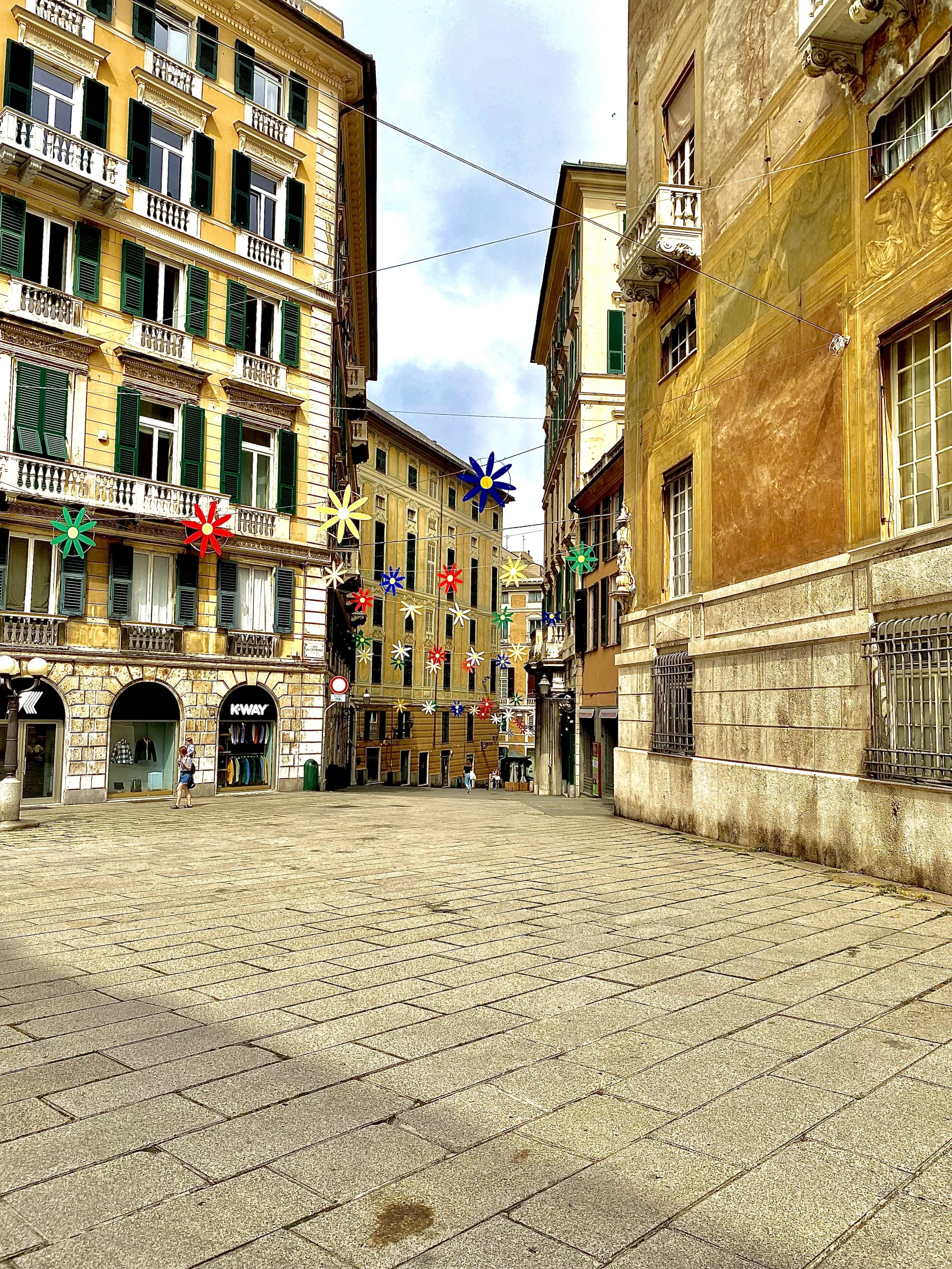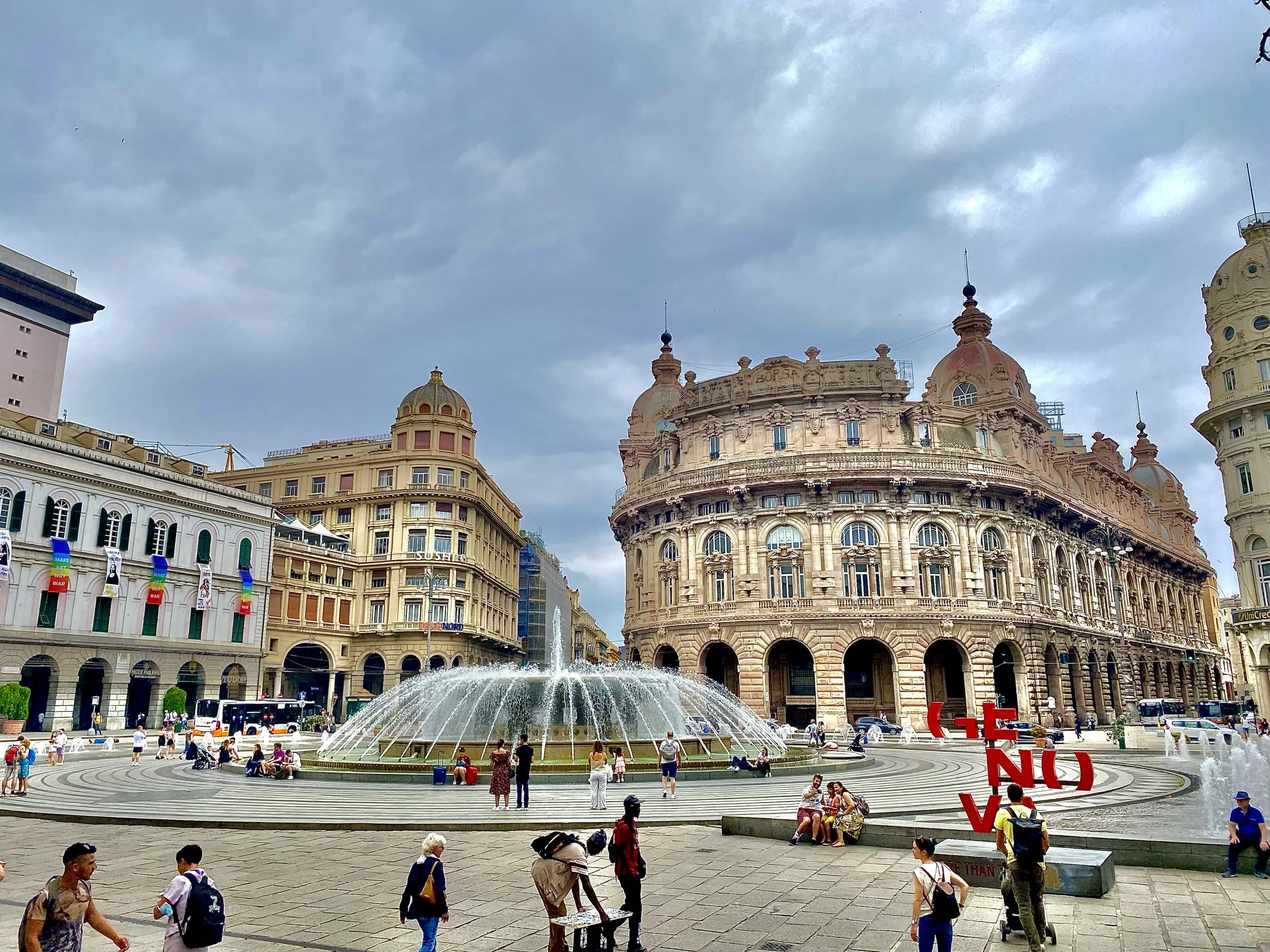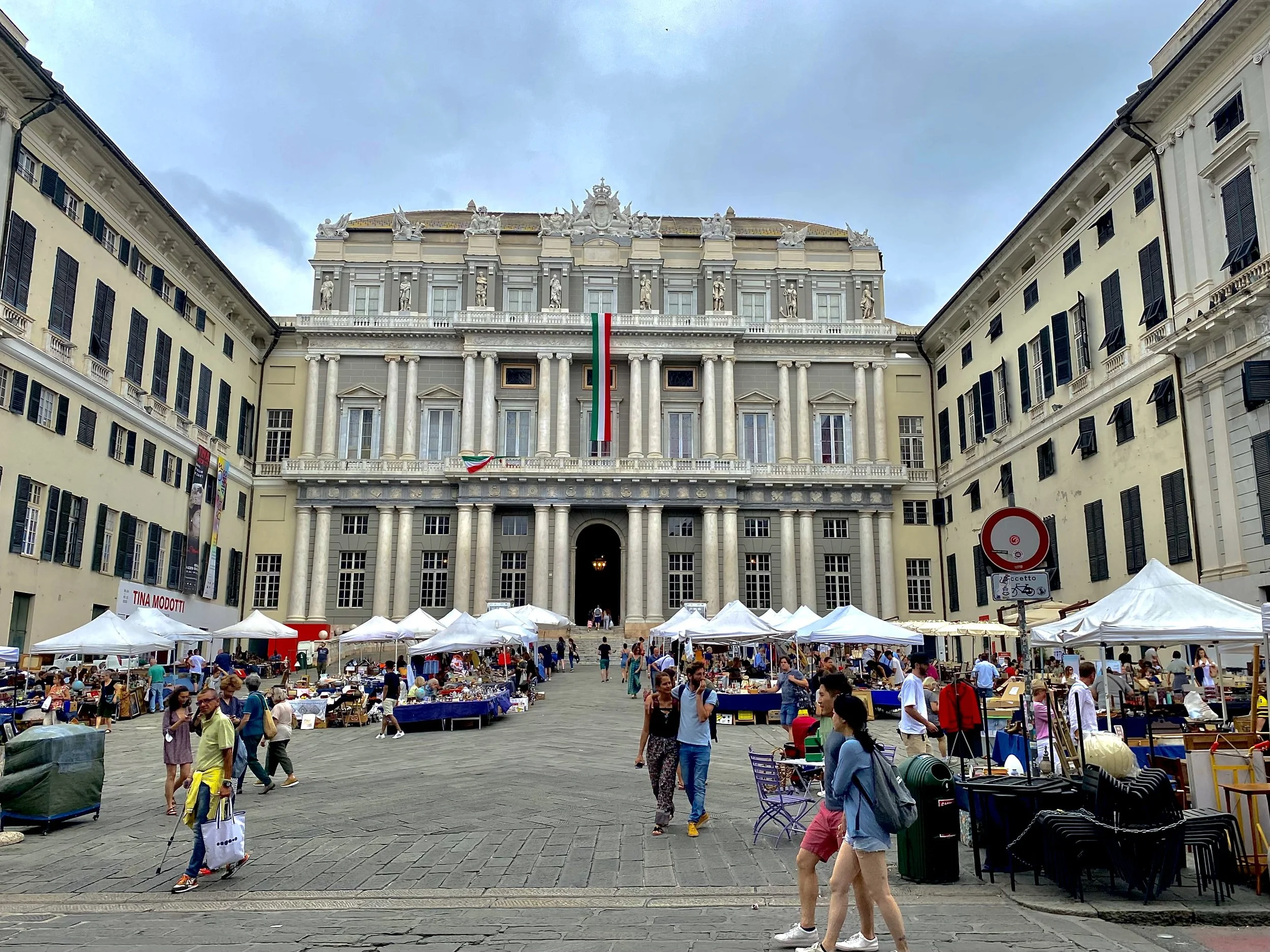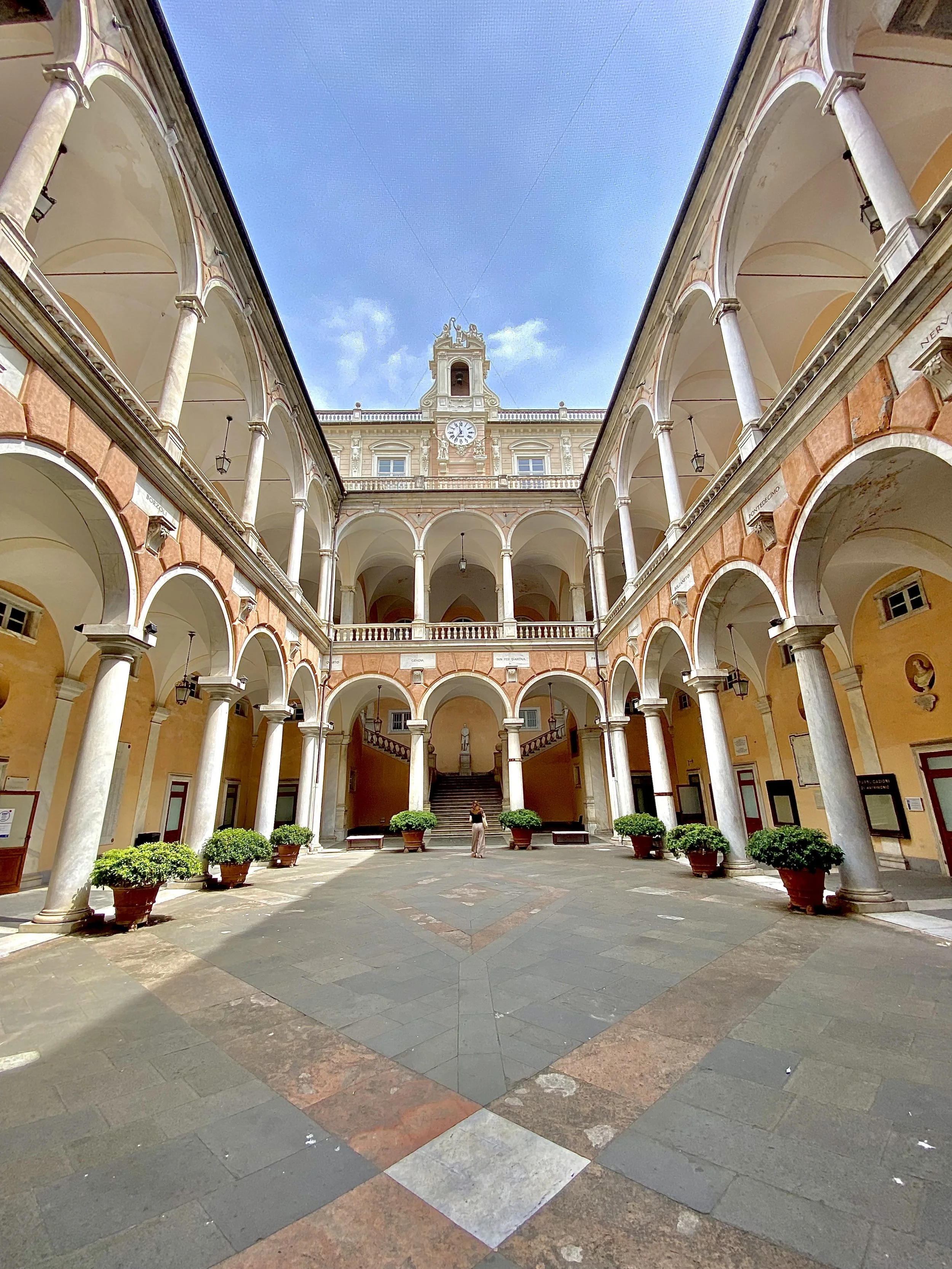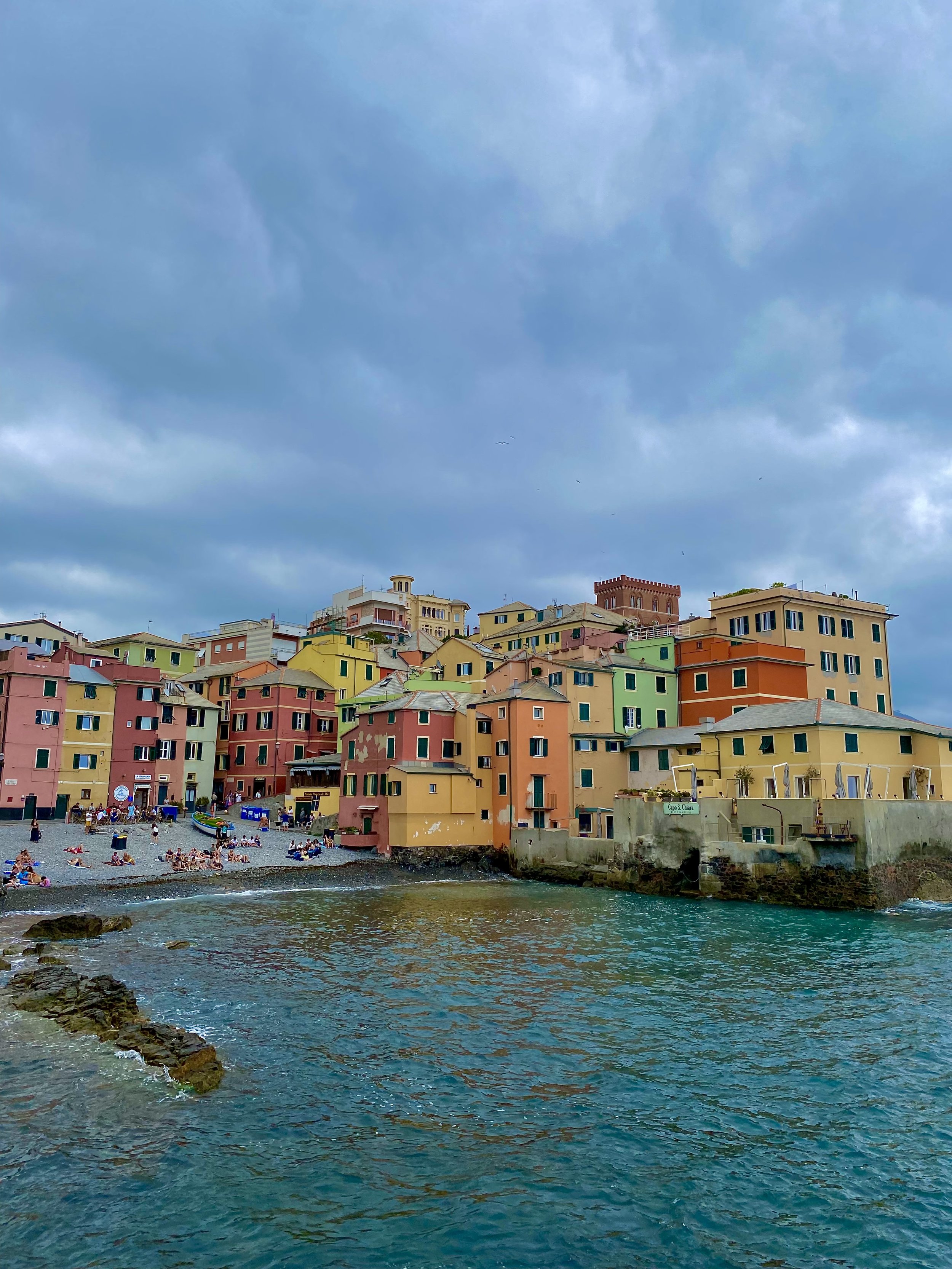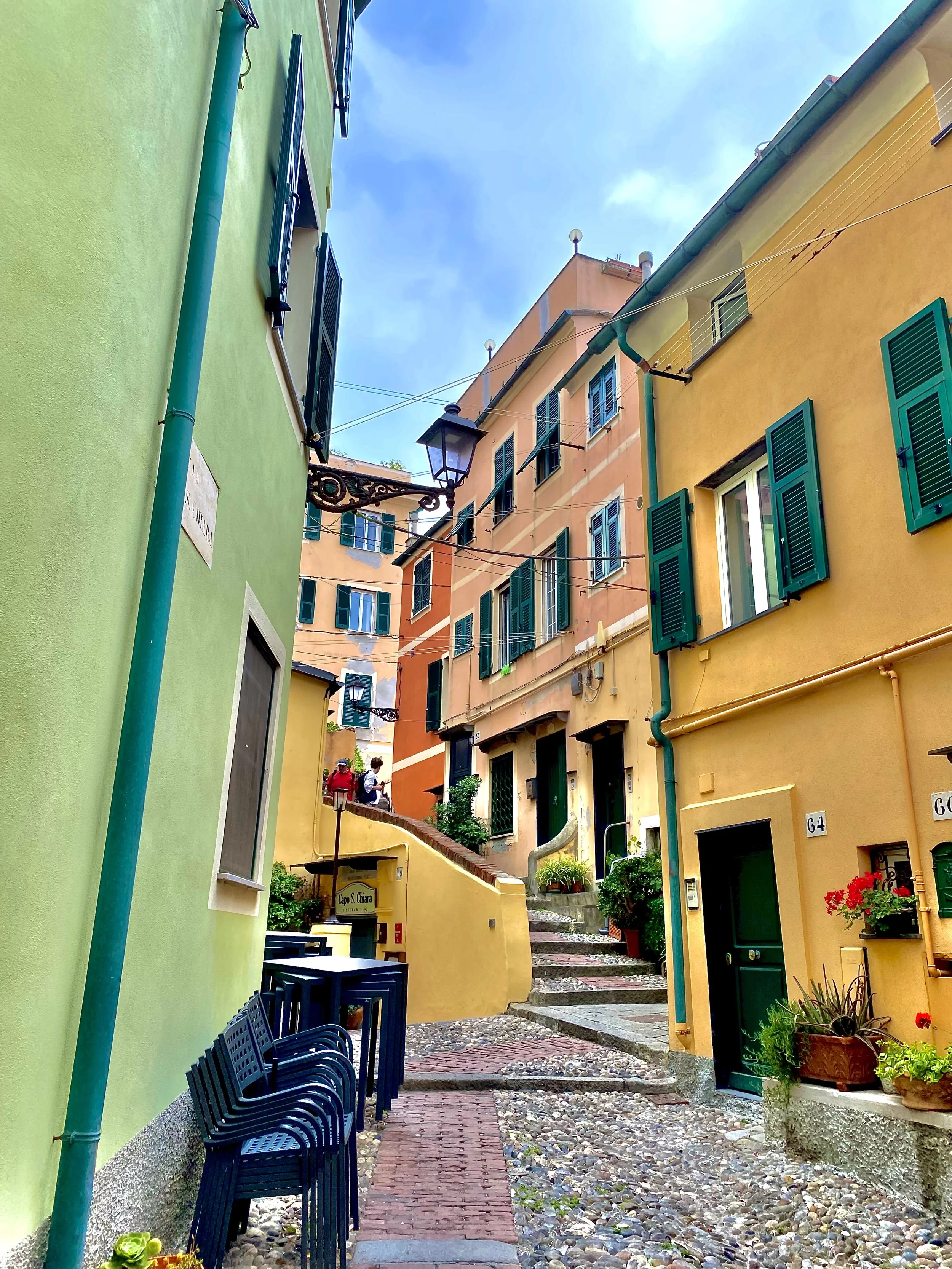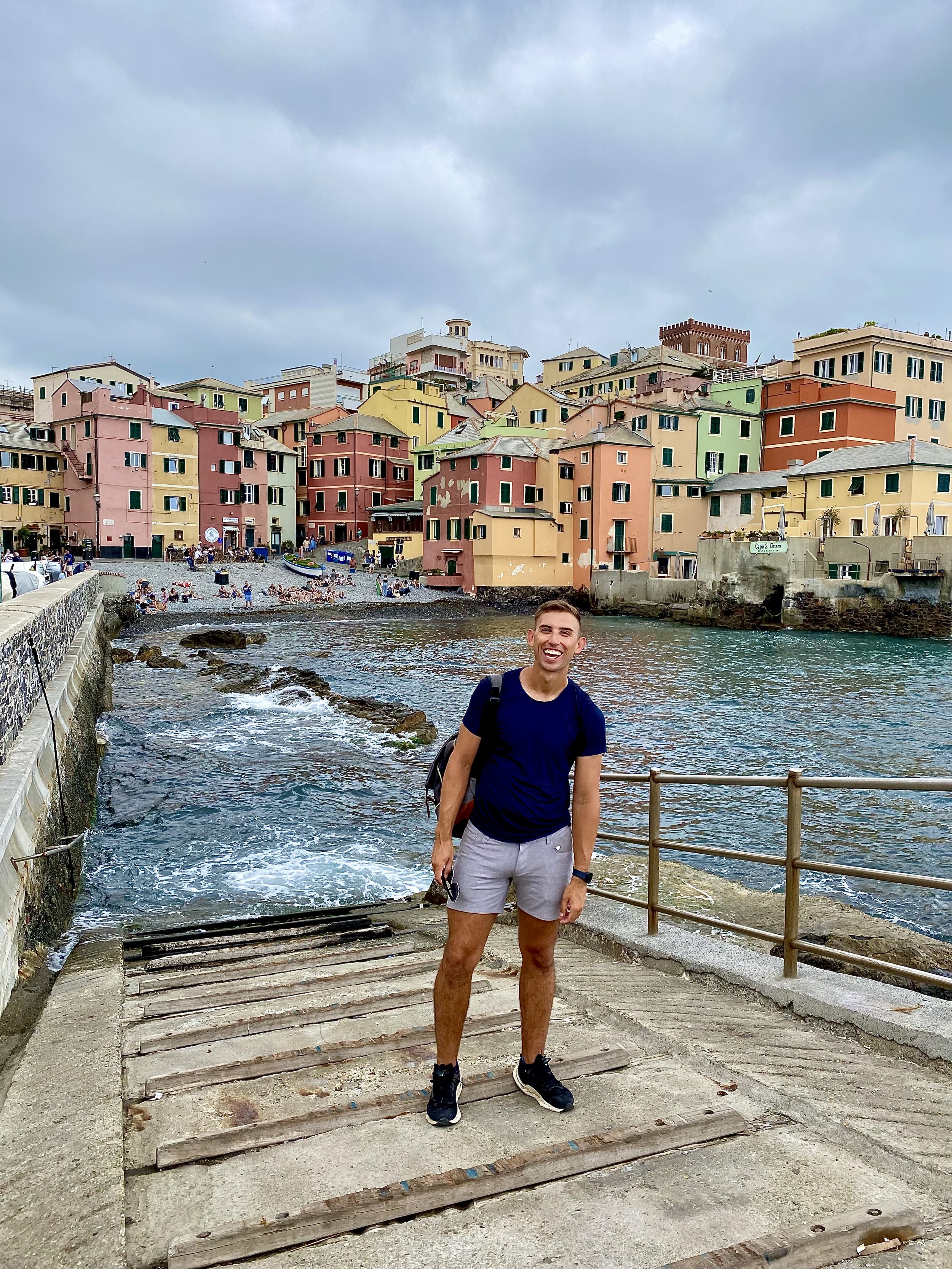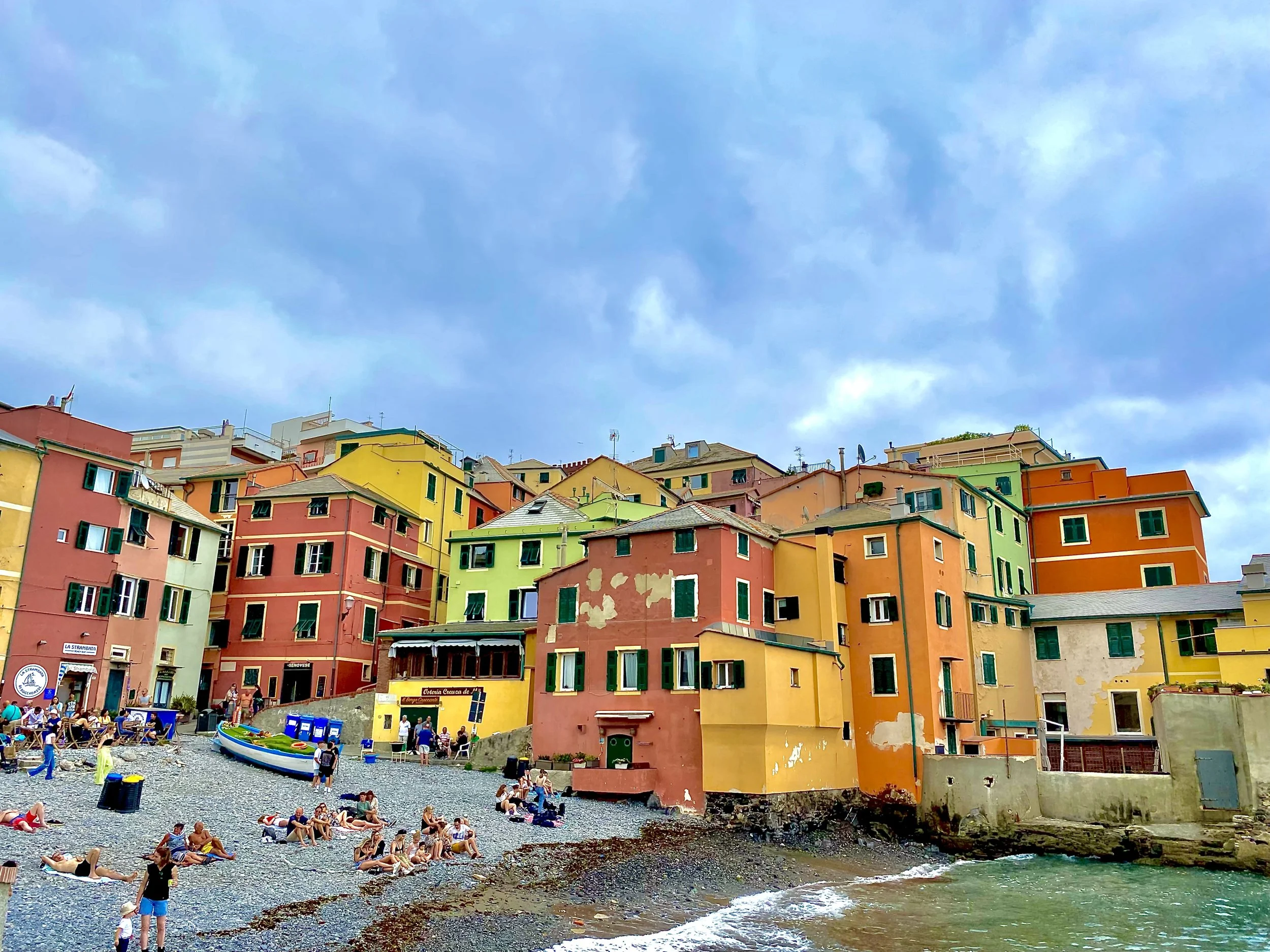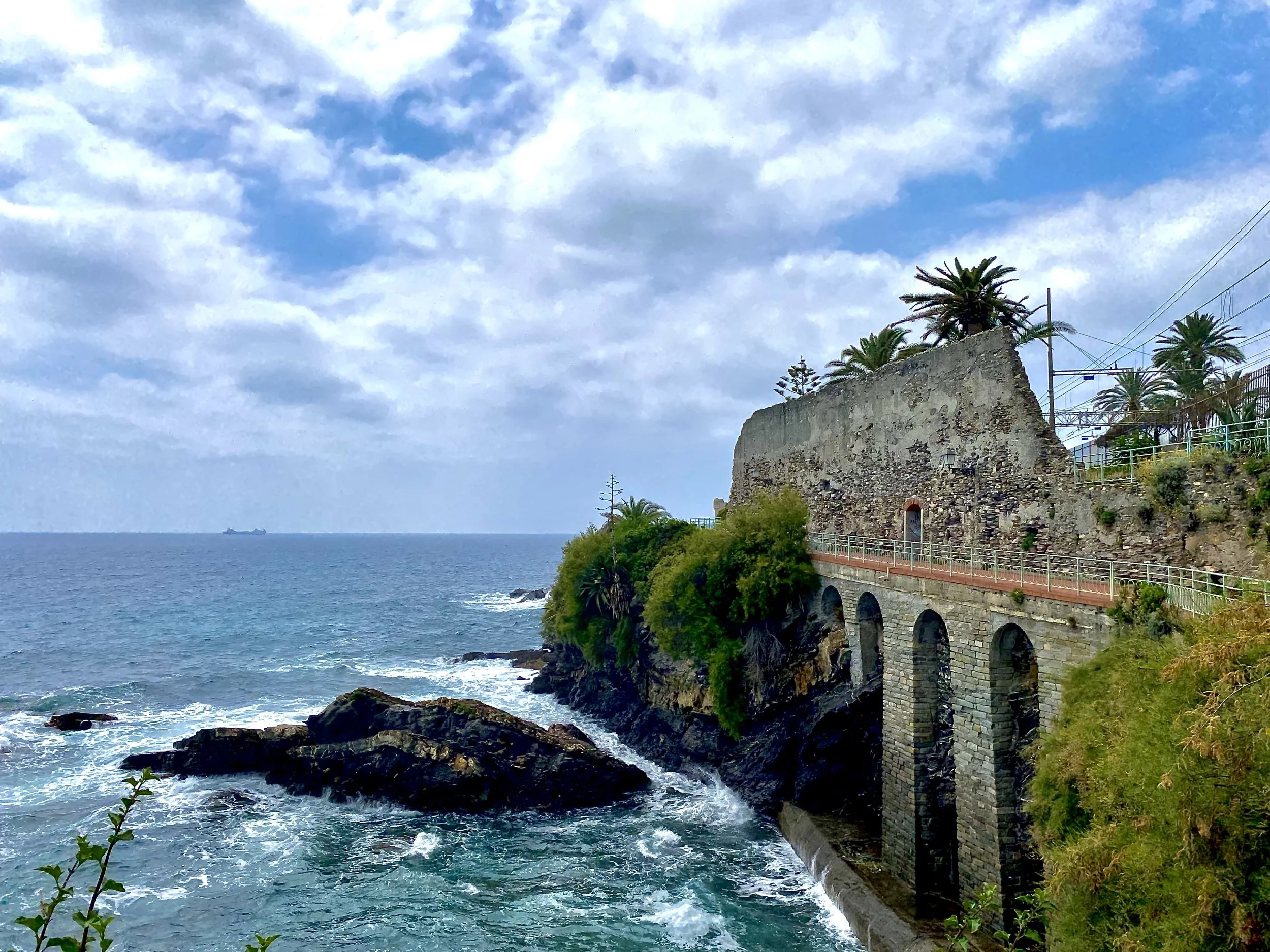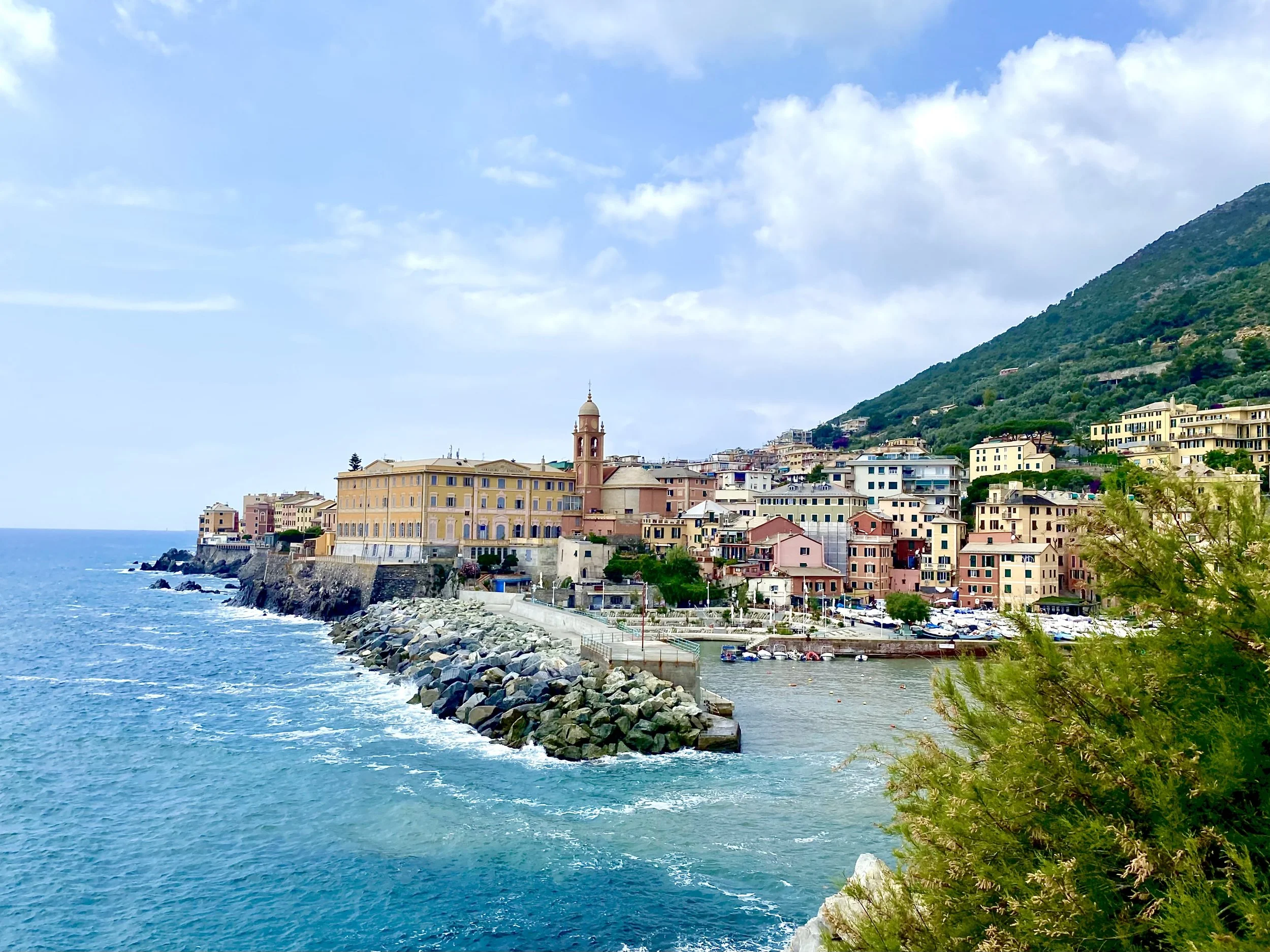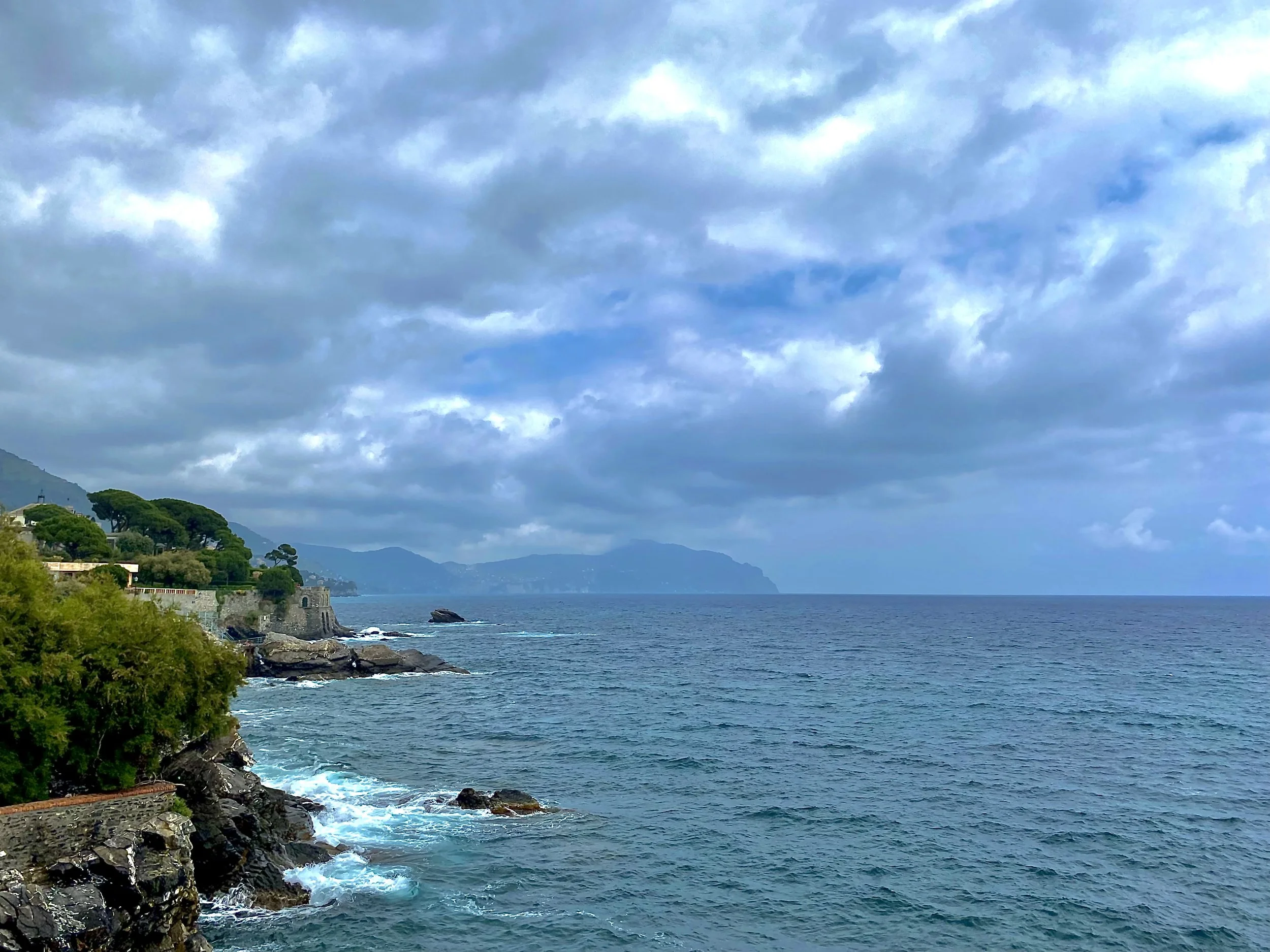Genova is a Celebration of Olive Oil
PREPARE TO EAT IN THE BIRTHPLACE OF PESTO
My first impression of Genova (English name Genoa) was that it was smoggy, congested, and dirty. Then I ate focaccia . . . and I was sold. It really didn’t matter what happened after that - I was going to love the city on food alone. I ate focaccia pretty much every style I found (plain, with rosemary, with fresh tomatoes, with onions . . . ), farinata (like socca, a large pancake made of chickpea flower, water, olive oil and salt that ends up tasting a bit like egg), and pasta pesto all day every day. The food highlights the deliciousness of olive oil - and I just could not stop eating it. Just, chef’s kiss.
(Good thing I was only there for a few days or I may have left the size of two of myself.)
But there’s a lot else to love about Genova. It is true that parts of the city are smoggy and congested with heavy traffic; however, most of the city, especially the historic district, is one of the most pedestrian-friendly places I’ve ever been; you can easily walk for 30 minutes through its narrow streets without bumping into a car. Many of its streets are strung across with large butterflies, flowers, or words made of lights. Like a lot of port cities, there is a grittiness to all of it, yet I found the overall effect charming. Plus, the city exudes a loud, boisterous Italian energy that quickly draws you in.
I found most of the go-to tourist sites unremarkable, so I think the best thing to do in the city is just to walk around the historic district and old port, eating the whole time. The other things I found to be must dos (and the things that were strongly recommended by hostel mates) are all a bit out of the city.
HEAD TO BOCCADASSE
On the eastern edge of Genova, at the end of its seaside promenade, is Boccadasse - a well-known mariner’s village. The town has preserved its pastel colored houses and is full of small businesses, especially gelato shops. It’s about an hour walk to get there along the promenade - but nearly the entire walk is seaside. It’s the cutest section of Genova I saw, and very worth the long walk.
STROLL PASSEGGIATA ANITA GARIBALDI
If you keep going along the seaside promenade for another hour after Boccadasse, you will get to Nervi - a former fisherman’s village that is now more of a seaside resort. You can also get there from bus or train. The town offers lots of small public beaches, so many of my beach-loving hostel mates would go during the day for the beach. What I went for was that Passeggiata Anita Garibaldi - a nearly 2 mile seaside walking path with stunning views. It did not disappoint! I took lots of breaks to sit on its benches and just look out to the sea.
Nervi also has an enormous public park but it was closed while I was there.
TAKE SOME DAY TRIPS
After you pick up your focaccia for the day, Genova is a great hub for day trips (which is how many of my hostel mates spent their time). Here are a few of the common ones:
Portofino: A fisherman’s village famous for its painted houses along the seashore - and its association with famous visitors.
Camogli: Another fisherman’s village on the peninsula of Portofino, Camogli was recommended to me for its beaches.
Cinque Terre: This is a famous grouping of five villages known for their colorful houses on steep terrain along the sea. You can walk between all five, making it a famous walking trip / hike.
The other two major cities of the area (Turn and Milan) are also accessible by day trip (2 hour train rides) if you don’t want to change lodging to visit them.

